The Lavin Agency Speakers Bureau
A speakers bureau that represents the best original thinkers,
writers, and doers for speaking engagements.
We value your privacy
We use cookies to enhance your browsing experience and to analyze our traffic. By clicking "Accept All", you consent to our use of cookies.
We use cookies to help you navigate efficiently and perform certain functions. You will find detailed information about all cookies under each consent category below.
The cookies that are categorized as "Necessary" are stored on your browser as they are essential for enabling the basic functionalities of the site. ...
Necessary cookies are required to enable the basic features of this site, such as providing secure log-in or adjusting your consent preferences. These cookies do not store any personally identifiable data.
Functional cookies help perform certain functionalities like sharing the content of the website on social media platforms, collecting feedback, and other third-party features.
Analytical cookies are used to understand how visitors interact with the website. These cookies help provide information on metrics such as the number of visitors, bounce rate, traffic source, etc.
Performance cookies are used to understand and analyze the key performance indexes of the website which helps in delivering a better user experience for the visitors.
Advertisement cookies are used to provide visitors with customized advertisements based on the pages you visited previously and to analyze the effectiveness of the ad campaigns.
A speakers bureau that represents the best original thinkers,
writers, and doers for speaking engagements.
How can we merge the arts and sciences to better understand humanity?
Both a theoretical physicist and a novelist, Alan Lightman bridges the gap between the worlds of art, the humanities, and science, and is an internationally recognized thinker on the meaning of science for understanding ourselves. He speaks elegantly about creative and scientific processes; the role of intuition and imagination; the work of Einstein; the meeting of science and faith; and the wonder and fragility of human nature—what it means to be alive.
After serving on the faculty of Harvard for a dozen years, Alan Lightman moved to MIT, where he became the first person to receive a dual faculty appointment in the sciences and the humanities. His short story, “The Second Law of Thermodynamics,” was the first fiction published by the physics journal Physics Today, and his essay “In the Name of Love” was the first essay on that subject in the prestigious international science journal Nature.
Lightman’s most recent project is a three-part public TV miniseries based on his writings, titled SEARCHING: Our Quest for Meaning in the Age of Science. As the on-camera host, he explores questions of consciousness, humanity, and nature. His latest book, The Miraculous from the Material, pairs gorgeous full-color photographs with fascinating essays on the science behind natural phenomena, revealing the deep wonder and connection to the natural world that exists around us.
Elsewhere, his essays on science and the human condition have been published in The Atlantic, Harper’s, The New Yorker, Tin House, The New York Times, and many other places. Lightman’s collection of essays, The Accidental Universe, was selected by BrainPickings as one of the ten best books of the year, and the title essay of that book was chosen by The New York Times as one of the best essays of the year in any category. “Lightman’s illuminating language and crisp imagery aim to ignite a sense of wonder in any reader who’s ever pondered the universe, our world, and the nature of human consciousness” (Publisher’s Weekly on Lightman’s Searching for Stars on an Island in Maine).
Dozens of independent theatrical and musical productions worldwide have been adapted from Lightman’s novel Einstein’s Dreams. An international bestseller, this book is one of the most widely used texts in universities today and has been translated into 30 languages. Lightman’s novel The Diagnosis, about the American obsession with information, speed, and money, was a finalist for the National Book Award in fiction. His novel Mr g, the story of Creation as narrated by God, blends science and religion and has been the subject of various print and radio commentaries. He is also the author of Searching for Stars on an Island in Maine and In Praise of Wasting Time. His book Probable Impossibilities is a collection of meditative essays on the possibilities—and impossibilities—of nothingness and infinity, and how our place in the cosmos falls somewhere in between. Kirkus called it “roaming, eye-opening, insightful, and literate collection of science writing . . . Complex science made accessible.” Lightman has also often been a guest on NPR and other radio programs, and was the inaugural recipient of Harvard’s Humanist Hub for “Humananism in Literature” award.
“A scientist who is a humanist in the noblest sense of the word.”
— The Los Angeles Times
In astrophysics, Lightman has made fundamental contributions to our understanding of black holes, radiation processes at the centers of galaxies, and the foundations of Einstein’s theory of gravity. He is a past chair of the high-energy division of the American Astronomical Society and an elected fellow of the American Physical Society as well as the American Academy of Arts and Sciences. At MIT, he has been the John Burchard Professor of Humanities and Senior Lecturer in physics and is currently Professor of the Practice of the Humanities. He founded the MIT graduate program in science writing and has received four honorary doctoral degrees. He also received the Andrew Gemant Award of the American Institute of Physics for linking science and the humanities, the John P. MGovern Science and Society award of the international science society Sigma Xi, and the Distinguished Alumni Award of the California Institute of Technology.
The First Latina in Space Former NASA Director
Director of MIT’s Space Enabled Research Lab Associate Prof. of Media Arts and Sciences
Director of The Muslims Are Coming! Author of How to Make White People Laugh
#1 New York Times bestselling author of Zealot and An American Martyr in Persia Distinguished Professor, UC Riverside
Author of Go Back to Where You Came From

Leading Cybersecurity Analyst Founder, Galante Strategies Former Director, Cyber Threat Intelligence Integration Center and IC Cyber Executive
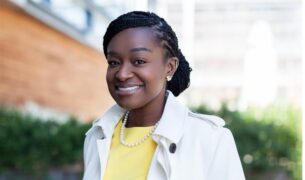
First Deputy National Cyber Director for Technology and Ecosystem Security Former White House AI Council Member Former Google Global Head of Product Security Strategy
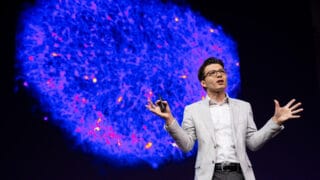
New York Times Visionary in Medicine and Science Founding Director of Stanford Brain Organogenesis Knight of the Order of Merit
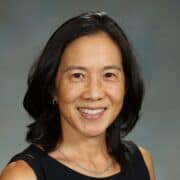
Author of Grit, the #1 New York Times Bestseller | Pioneering Researcher on Grit, Perseverance, and the Science of Success
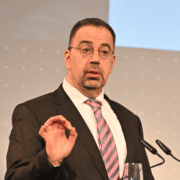
2024 Nobel Prize Winner | 3rd Most Cited Economist in the World | MIT Institute Professor | Bestselling Co-Author of Why Nations Fail and Power and Progress
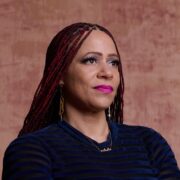
Pulitzer Prize-Winning Creator of The 1619 Project | Executive Producer of the Emmy Award-Winning 1619 Project Hulu Docuseries | MacArthur Genius
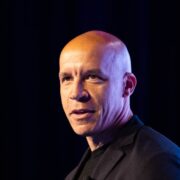
Nike's Former Chief Marketing Officer | Author of Emotion by Design
CEO of The Atlantic | Former Editor-in-Chief of WIRED
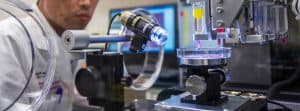
Our bodies are purely material, made of atoms and molecules. So how do complex human experiences—such as consciousness, being connected to nature and to other humans, and the appreciation of beauty—arise from mere atoms and molecules? Drawing on his book The Transcendent Brain and his related public television series SEARCHING, internationally bestselling author and physicist...

Modern science teaches us that everything can be explained in terms of atoms and molecules, including our human experiences. But our material brains are capable of “spiritual” experiences—the feeling of being connected to nature and to other human beings, the feeling of being part of something much larger than ourselves, the appreciation of beauty, and awe, for instance. But internationally ren...

Albert Einstein is a household name, but few of us know his story. Author and physicist Alan Lightman has written extensively on Einstein and his work, including his international bestseller Einstein’s Dreams, which has been translated into 30 languages.
In this lecture, Lightman discusses the life of Albert Einstein, using some of the personal letters Einstein himself wrote. He explores...

In this talk, renowned author and scientist Alan Lightman brings an incredible new dimension to science by revealing beautiful photographs of extraordinary natural phenomena. Drawing on his book, The Miraculous from the Material, he presents and discusses the color of trees in the fall, the beautiful spiral structure of plants and seashells, sunsets, the amazing color of the mandarin f...

In this lecture, Alan Lightman draws on his unique personal experience as both a physicist and a novelist to discuss the similarities and differences in the way that the sciences and the arts approach the world, their different conceptions of truth, their different methodologies, and the similarities in their creative process. For example, all questions in science have definite answers, while q...
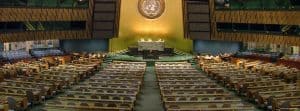
In this talk, Alan Lightman discusses the social, economic, and political obstacles women face in Southeast Asia and various strategies to help advance these women. He draws on fifteen years of his own experience, founding, leading and growing the Harpswell Foundation—an organization which has partnered with the Peace Corps, UN Women, Women’s Alliance for Knowledge Exchange, and other organizat...